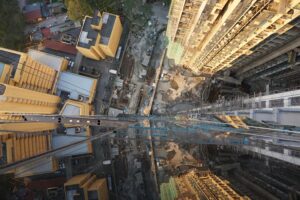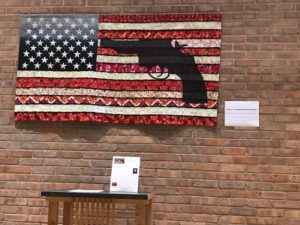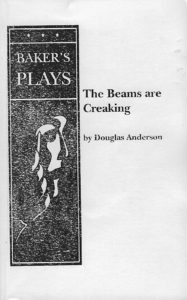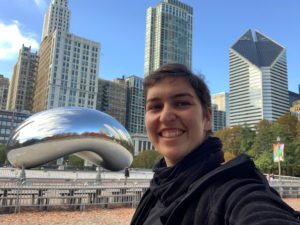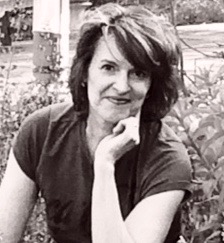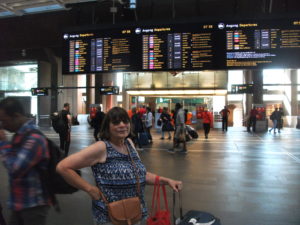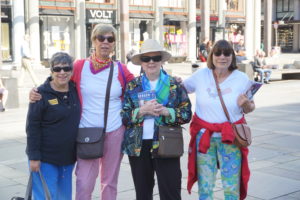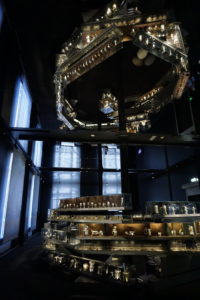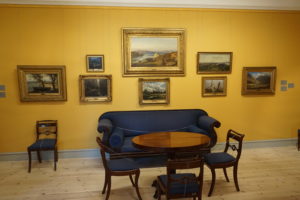Category Archives: Art
Honoring Victims of Violence
At first, the music was minimal or even silent. Voices from the twelve-member Adrian Dunn Singers, spread across the back and sides of the sanctuary of Augustana Lutheran Church of Hyde Park, simply announced a date in 2021, beginning on January 1, followed by the names of specific homicide victims of that day, mostly of gun violence. Steadily, they moved through the calendar year, each ten seconds in the score representing one day. Being the type of person who cranks numbers quickly in his head, I could not resist doing the calculation and determining that the pace stated in the program would consume just over an hour. A good length, I thought.
The weeks and months rolled by with the haunting music steadily asserting itself, but it was not lyrical. It sounded incantational, voices from the throat at various pitches as particular singers chimed in, based on troubadour melodies. This music induced, as my wife noted, meditative moods, or in my case, a growing and palpable sense of the waves of humanity slaughtered on the city’s streets and elsewhere, nearly 800 according to the Chicago Police Department, the worst year since 1994. For me, it was beyond a feeling of grief; it was an emotion that encompassed a profound sense of the waste of human lives, many of which never had the opportunity to contribute their talents to the city or our nation—just this gulf between what could have been and what we have become.
This July 23 premiere of “Memoria de Memoria,” a composition by composer Christophe Preissing, was requested by Rev. Nancy Goede, the parish pastor of Augustana, to honor the first anniversary of the death of Keith Cooper, 73, a member of Augustana killed last summer in a botched carjacking just two blocks away. Unanticipated was the punctuation of this year’s Chicago summer by the mass murder of seven people during a July 4 parade in nearby Highland Park, Illinois, a north shore suburb, in which about 30 other people were wounded, including an eight-year-old boy who now is paralyzed from the waist down. The alleged perpetrator, Robert Crimo III, was arrested later that night by police who found him in his car in Lake Forest. Highland Park, which quickly became the latest focus of national news on the problem of assault weapons and mass violence, will never be the same. There will always be before and after for Highland Park. For many violence-plagued neighborhoods in Chicago, however, there is always the frightening tension of now, of the gang that can’t shoot straight, of every day that we fail to get the guns off the streets and fail to find ways to give countless youths, many of them young Black men, some positive sense of purpose in life.
In the meantime, art can help us express our anger, our grief, our moral passion. That was the power of the Saturday evening presentation, of letting us experience all that emotionally through exquisitely crafted but distinctly unconventional music. Audience members had the opportunity to approach the altar, light memorial candles, and remember those whose memories they cherish as unique human beings whose light was extinguished prematurely through violence.
Readers may note in this blog post the absence of photos of the concert itself. It did not seem appropriate to shoot photos of or during the performance, although I share two that I took later and consider important. One shows the fabric art of Michele Makinen, who died of cancer earlier this year but lived in Chicago since 1974. “Guns: A Loaded Conversation” hung on the sanctuary wall, exhibiting the intricate workmanship Makinen brought to her response to the shooting of innocent children at Sandy Hook Elementary School in Newtown, Connecticut, in December 2012. The flag quilt became part of a traveling exhibit the following year.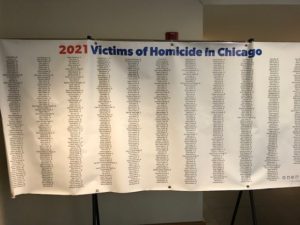 The other photograph shows the almost complete list of victims of violence in 2021 in the city of Chicago. I say “almost” because I was told it may not have included some people injured in late 2021 who died earlier this year after the poster was completed.
The other photograph shows the almost complete list of victims of violence in 2021 in the city of Chicago. I say “almost” because I was told it may not have included some people injured in late 2021 who died earlier this year after the poster was completed.
Let me just note, in closing, that the Hyde Park community and Augustana, in celebrating the life of Keith Cooper, whom I memorialized in a blog post a year ago, have created the Keith Cooper Fund to “provide monetary awards to promising young people between the ages of 16 and 26 who live in one of the neighborhoods of the near South Side of Chicago.” They may use the grants to seek training in a vocational or licensed trade; grow a startup business; or launch a career in jazz or other performing or fine arts. Keith Cooper represented all those aspirations and more, seeking to help those around him. Donations can be made online at www.augustanahydepark.org. You can contact the Keith Cooper Fund at keithcooperfund@gmail.com.
Jim Schwab
Acting in Good Faith
How does one portray the life of a man whose ultimate fate was a hanging at the hands of the Gestapo, with just four weeks left until the German surrender in World War II? Even an experienced professional actor might find that role daunting. I played that role last Friday evening in what amounted to my amateur acting debut, complicated by a Zoom platform in what we all hope are the latter stages of a pandemic. I’m certainly accustomed to being on a stage in front of an audience as a public speaker, but in those situations, I am speaking for myself. Portraying a historical figure of the magnitude of Dietrich Bonhoeffer is a very different matter.
The collective performance of volunteers mostly from Augustana Lutheran Church of Hyde Park in Chicago occurred on the anniversary of Bonhoeffer’s execution in 1945, at the Flossenburg concentration camp near the German border with Czechosolvakia. One suspects the SS, whose Judge Otto Thorbeck condemned him to die the day before the hanging, must have been in a hurry. Just two weeks later, American troops liberated the camp.
My intent in discussing this in a blog post is not to review the play, The Beams Are Creaking, by Douglas Anderson, but to reflect on what I learned from taking on this role in the first place. It is also the case that several rehearsals—and rereading the script a few times—occupied enough of my time to explain my hiatus from blog writing in recent weeks. It was only as we practiced our parts that I began to realize what I was trying to accomplish, but I was hooked. The play begins in 1933, with Bonhoeffer returning from the United States to Germany at the dawn of the Nazi rise to power. There are several biographies of Bonhoeffer, the most notable probably being that written by his close associate, Eberhard Bethge, Dietrich Bonhoeffer: A Biography, originally published in Germany in 1967, and later translated into English.
The necessary brevity of a play, if done well (and this is), condenses essential points and makes them more visible not only to the audience, but to the actors as well. I quickly realized from the full scope of the script that Bonhoeffer was not entirely the same man in 1945 that he was at the outset of the drama, when a streak of naivete about the German future still shaped his outlook. Born in 1906 in what is now Poland, Bonhoeffer returned from America with decided impressions about the injustice perpetrated on the American Negro, but not disposed to compare their situation with the plight of Jews in Germany, in part because he simply did not believe that Germany could succumb to the appeal of Adolf Hitler. Confronted early in the first act by Hans von Dohnanyi with the possibility of the Nazis gaining power, Bonhoeffer simply replies, “It couldn’t happen. It couldn’t happen in Germany.” By now, of course, the most observant among us are aware of a few too many historical developments that “could not happen” but did.
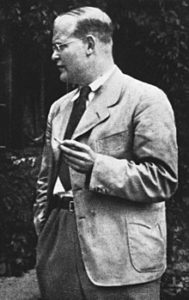
Photo of Dietrich Bonhoeffer, reproduced from Wikipedia at https://en.wikipedia.org/wiki/Dietrich_Bonhoeffer
Bonhoeffer was soon disabused of his initial perspective, particularly when he dares to give a radio speech implicitly criticizing the Fuhrer. The Nazis silenced the radio station before he could finish. And that is the first of many steps that lead him steadily, inexorably, into a conspiracy to assassinate Hitler—a conspiracy that failed with dire consequences for those involved. When the play ends, he is sitting in Tegel prison, but Gestapo agents have come to transfer him to Flossenburg, which all around him know to be a death sentence.
The challenge for me in playing Bonhoeffer was to transfer to a Zoom screen that sense of the gradual but inevitable shift from a 27-year-old idealist, steeped in faith as a trained theologian and pastor, to a 39-year-old man who has come to terms with the deepest meaning of faith at the darkest moments in anyone’s life.
This struggle for almost anyone involves a powerful mixture of personal circumstances and challenges and some sort of deep faith that undergirds the transition that his life undergoes. One key turning point, midway through the play, involves the planned emigration of his sister, Sabine, and her Jewish husband Gerhard, to escape the coming Holocaust. In the play, this is the point when, having been approached by others who are involved in the plot against Hitler, he decides, “I will be a conspirator.” This is not a line that I shouted from the rooftop; it was one that I delivered with a heavy heart, realizing what will likely be demanded of Bonhoeffer in the coming years.
The second and final act opens later with Bonhoeffer in prison, chatting with a friendly guard, musing over his role as a thorn in the side of the Gestapo. The middle of the act consists of a monologue, Bonhoeffer with a mop talking to the floor, articulating his frustration with the official church in Germany, its betrayal of principles and purpose, ultimately concluding that it has driven the thinking man from the church because, “It honesty doesn’t know what to say to him.” One might call it a sense of despair, but it is also a lonely note of defiance.
One cannot gainsay the role of faith in Bonhoeffer’s life and how it affected his decisions. For a 39-year-old man facing death, he left behind some of the most meaningful spiritual writings of the 20th century, including his letters from prison, but also the classic The Cost of Discipleship, which begins with the theologically famous line, “Cheap grace is the mortal enemy of our church. Our struggle today is for costly grace.” Bonhoeffer was not about to lie to anyone about the high cost of confronting evil power.
That is the background. What did I learn from this volunteer dramatic effort? First, there was the challenge of presenting this on Zoom, as pandemic restrictions made a live stage presentation problematic. We practiced on Zoom, which was never designed for presenting plays, and learned to work with its limitations. These included the need for all of us to wait at strategic points to deliver our lines until Nancy Goede, pastor of Augustana, who conceived of this operation in the first place, secured the licensing rights to present it, and acquired the scripts for all of us, could produce sound effects (such as knocking on a door or a phone ringing) at points where that otherwise would have been a background stage noise. On Zoom, however, our talking would have filtered out such sounds, so we had to master the timing to allow those sounds to occur. There are scenes where the historical context emerges from radio announcements, and certain people had to provide those, speaking into makeshift microphones of the era, and so forth. In many ways, despite the visual presence on Zoom, our production resembled an old theater of the radio, and with a story set in the 1930s and 1940s, perhaps that aided the dramatic impact. But taking all the emotional impact of the story I mention above, and framing it within Zoom, was an interesting challenge and ate up a significant amount of time in rehearsals.
Given that almost no one had the spare time to learn every line by heart, this was “Readers Theater,” in which people used the script during the performance. However, to increase the impact of Bonhoeffer’s presence, I mastered the art of essentially hiding the script below the screen, that is, out of sight of the webcam, while also anticipating lines that I could deliver without even looking at it. On stage, all of this would have been impossible, but then Zoom made other things impossible, such as Bonhoeffer hugging or kissing his fiancée, Maria von Wedemeyer, when she visits him in prison. Live theater online involves its own fair share of compromises.
I would love to provide some photos here of the performance, but licensing rights prohibited recording. I have chosen to make do with other approaches to make this more visually interesting.
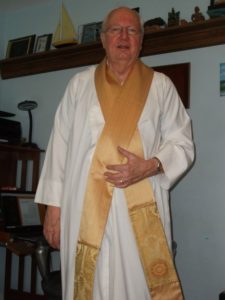
Me, as Bonhoeffer, in “studio” in clerical garb for scene with Hermann Goering and Bishop Ludwig Muller
In addition to the invisible but important influence of people like the pastor, I must mention that no performance like this operates without serious teamwork. Much of what I did gained from the adroit counterplay of other actors. Dan Friedrich, who played multiple roles, was a remarkably cynical Hermann Goering, making very effective use of Goering’s perverse sense of humor, as in a meeting between himself, Bonhoeffer, and Bishop Muller of the German national church. When Bonhoeffer offers to show that his opposition movement has some 6,000 pastors objecting to some new Nazi policy declarations, Goering laughs it off by noting ominously that “we already know who they are.” Both my role and Dan’s demanded an effective foil on the other side. I learned how to use such foils to the benefit of the portrayal of my own character. On
the other hand, Theresa Fuchs, a visitor from Germany working at the Goethe-Institut, played a very convincing and sincere Maria. Her soft German-accented English lent an air of linguistic reality to the play, but more importantly, she also schooled the rest of the cast on the proper pronunciation of German names (though it didn’t always take, as one might expect).
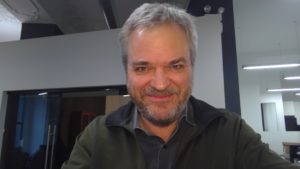
Dan Friedrich played both sides: General Hermann Goering and the anti-Nazi conspirator Schlabrendorff. That is, when not also playing an American correspondent at the 1936 Berlin Olympics.
As for Dan, a software developer who has a serious sideline hobby in comedy improv, he can take credit for introducing us to Andrea Holliday, who provided the narration where Zoom made certain stage effects either difficult or impossible.
In the end, this experience taught me a deeper respect than I already had for what professional and even community theater actors attempt to do all the time. It involves investing some of your own emotional energy in the portrayal of the character, and in the case of a character like Bonhoeffer, some significant willingness to try to achieve an understanding of that person’s world view and faith. Frankly, after this 2 ½-hour online presentation was over, I felt a significant need to unwind and recover from what I had just done. Acting is a unique artistic enterprise in the way it demands that you embrace another person’s perspective, especially when that person is a historic figure, rather than the product of a creative author’s mind. It stretches one’s mind and heart in special ways.
Jim Schwab
P.S.: For a blog perspective on the presentation by Pastor Nancy Goede’s husband, Jim Vondracek, click here.
The Eyes Have It
I might have thought by now
you would have found the exit
from the hall of mirrors.
But no. You are mesmerized
by its dreamy distortions,
imprisoned by its illusions.
Perception arises from wave
lengths and shadows, reflections
against a shifting surface.
Tall becomes short, wide
becomes narrow. Eyes bulge,
then shrink into shocked sockets.
You must linger to feed the hunger.
Within the funhouse walls,
where the insecure, the paranoid,
the narcissistic control the asylum,
the Great Sphincter,
sustained by his Ras Putin coterie,
emits his daily surprises
to the surprise of no one
but the angry, the gleeful gullible,
the sheep led to COVID slaughter
while wildfires consume the hallways.
Is the funhouse aflame?
Now that changes the climate
amid the melting glass
of the deteriorating mirrors.
Alas.
Jim Schwab
Romping through South Florida
Two weeks ago, I spun a narrative about hazard mitigation in Hillsborough County, Florida, based on both prior knowledge and a personal tour conducted by long-time colleague Eugene Henry. Today, a full month or more after that visit, I add notes about touring the Sarasota area with my personal friend and high school classmate, David Taylor. David is a Vietnam veteran and professional photographer who was part of the Brecksville (Ohio) High School class of 1968. Yes, we graduated in the middle of it all in the late 1960s.
Unlike me, David was drafted into the army. I maintained a student deferment initially, then went untouched by the draft lottery, which reached 125 the year I surrendered my deferment. Numbers were based on the number pulled for your birth date. Mine was 135. Such was the luck of the draw in those days. In less than two months on the ground in Vietnam, David was badly injured in a mortar explosion, evacuated to a hospital and sent home. His injuries were more than severe enough to terminate his service. He spent months in rehab. When it became clear that cold weather aggravated his disabilities, he moved to Florida. He has lived there ever since. He and his wife, Linda, now live in a small home in a subdivision near the water in Sarasota.
His long tenure in Florida has allowed him ample time to learn the sights and sounds of his adopted home. One thing my wife and I learned from staying with him for five days is that Dave is relentlessly curious. He attended and videotaped my February 22 lecture for Florida Atlantic University in West Palm Beach, then loaded the 37-gb high-res recording on a flash drive. Download it to your laptop when you get back, then reload the flash drive with as many documents and photos about your work as will fit on it, he told me.
I don’t think Dave completely understood. I could give him nearly everything I have and never fill up a drive of that size. But Dave lives in the film world, and all the reports I have downloaded as PDFs and all the still photos I have ever taken will never equal more than a fraction of that memory. I gave him all I could.
More importantly, however, Dave took us on some tours to take maximum advantage of the two days we had remaining after returning from West Palm Beach (a 3 ½-hour drive across the southern interior of Florida). From an environmental standpoint, it is important to know that Florida is a more diverse state than outsiders may realize and that, due to rapid urbanization in the past few decades, it also faces environmental challenges and threats of significant proportions. The state has been wrestling with many of these for a long time. The fate of the Everglades triggered one of the most notable environmental policy battles in American history, but there are many smaller issues as well, many engendering serious public health concerns as well.
One to which Dave took us, new to me, was the American Beryllium site on Tallevast Road in Sarasota. Now abandoned, the site hosted a manufacturing facility for machine parts of the Loral Corporation, parent company of American Beryllium, for more than 30 years until 1996. The operations created beryllium dust that contaminated the soil and groundwater. Lockheed Martin acquired the plant in 1996 and closed it down. Subsequent investigations discovered the contamination and documented the need for cleanup of what was then a brownfield site. By 2008, the Agency for Toxic Substances and Disease Registry (ATSDR) of the U.S. Department of Health and Human Services completed its own assessment of the health risks, concluding that, while there was a wide margin of possibilities given the combination of contaminants including trichloroethylene in the beryllium-containing metals on the site, there was a definite public health hazard. Previous use of groundwater by local residents and employees, which by then had ceased, posed a credible risk of kidney cancer, liver cancer, leukemia, and lymphoma. By 2004, all nearby residents had been using municipal water, but the long-term legacy could not be ignored.
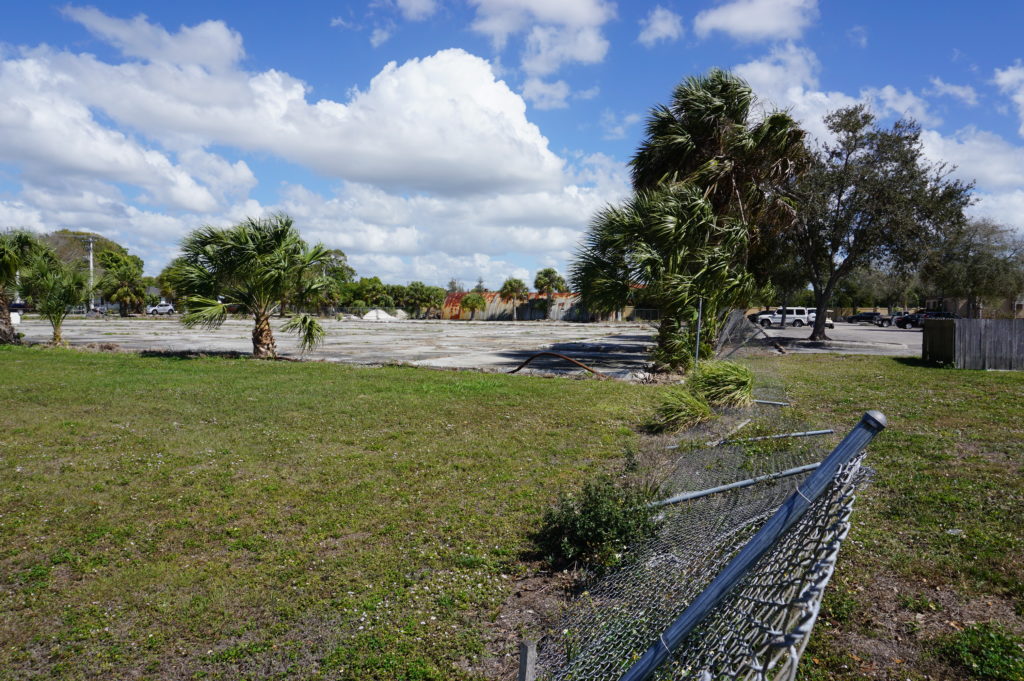
The site today is mostly an empty lot next to a golf course. There is a fence around it that, frankly, is not well maintained, but how much danger the site poses at this point, I do not know. The empty lot looks rather forlorn, yet the area around it contains a fair amount of operative commerce. When, if ever, the site will be ready for reuse remains to be seen. Mostly, it is a sobering reminder of our past use and misuse of such toxic materials in manufacturing processes and the problems they often leave behind. Beryllium is a divalent element, a strong metal with high thermal stability that is useful in aerospace applications, certainly of interest to a firm like Lockheed Martin. But often in the past, manufacturing firms took inadequate measures to prevent the sort of pollution that materialized on this site. The result is a long-standing eyesore for Sarasota.
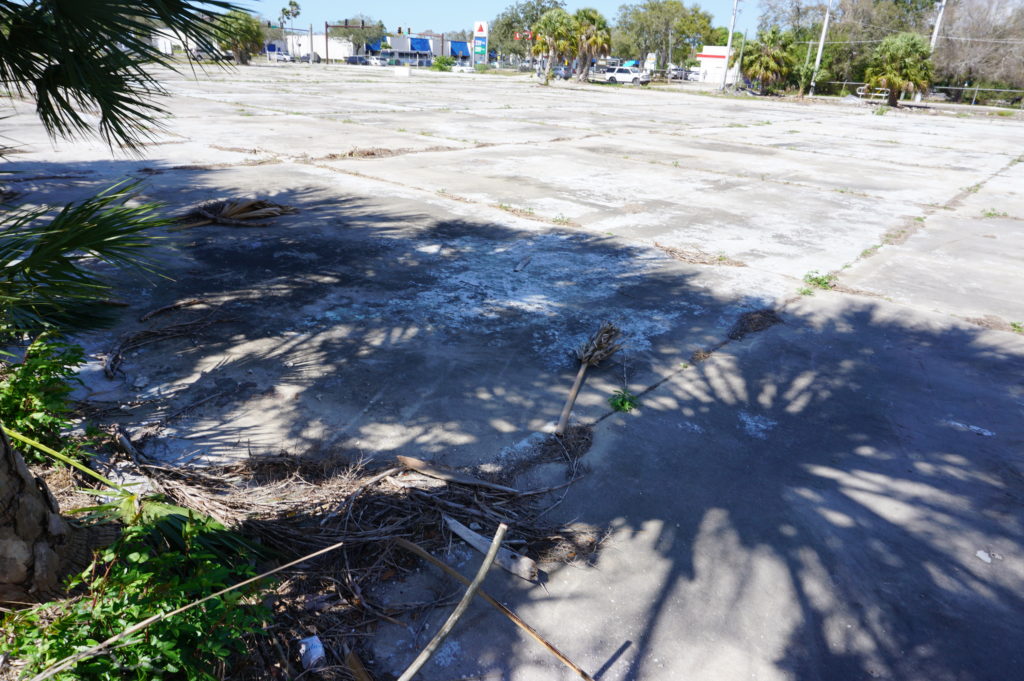
But there were other things to see in the area, like Myakka River State Park, which features a wildlife preserve that is worth visiting and attracts many visitors. Park officials are often available to explain the wildlife you are seeing, such as snowy egrets, cypress trees, vultures, and, of course, alligators. The vultures seemed exceptionally calm and contented, so Dave and I concluded that they had already had their fill for the day.
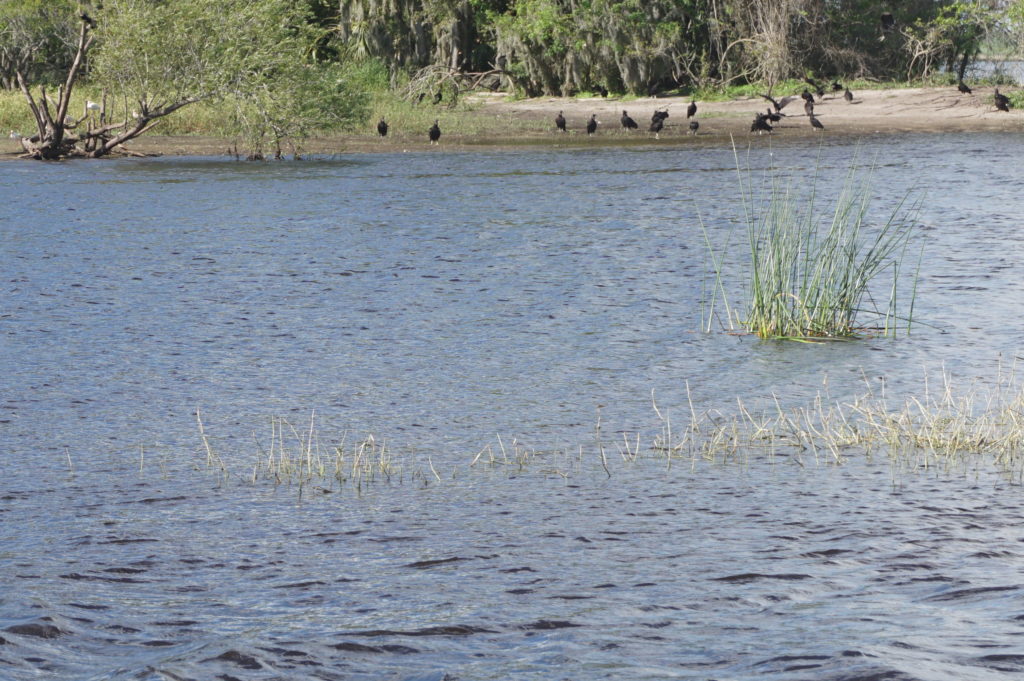
Unable to stop myself—we have a growing collection of souvenir mugs in our cupboards—I bought a reasonably priced mug from the gift shop with the state park logo embedded in the ceramic. Our children one day, when we are no longer breathing, may wonder “Myakka what?” and pass it on to the nearest Salvation Army store, but we will enjoy it for the next 20 years, or until one of us accidentally drops it on the floor (whichever comes first). Who knows when we will be back?
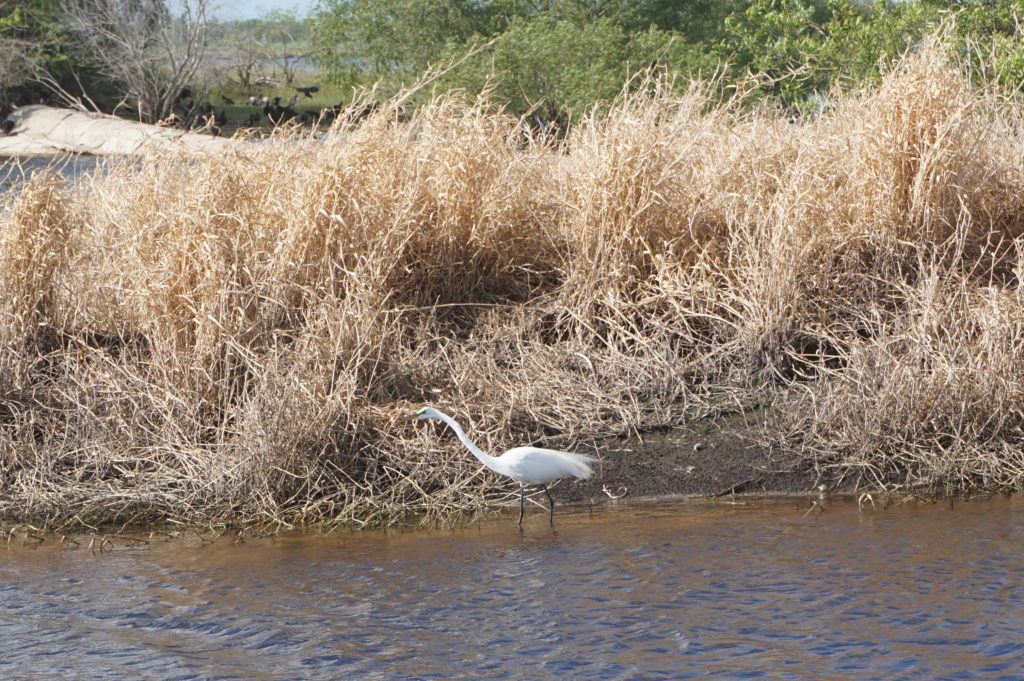
David has vivid memories of his Vietnam experiences, and to some extent, like most Purple Heart veterans, of the trauma involved in his experience. This remains no small part of his semi-retired life, in which he is also enrolled in film and history classes at nearby State College of Florida, and continues part-time photographic work. So, he took us to the Sarasota National Cemetery, where veterans may choose to be buried, and where he has attended and participated in numerous ceremonies. Kiosks exhibit photos documenting the veteran experience as far back as World War I but as recent as Afghanistan. The growing Florida population including the elderly means a growing number of veterans for whom the cemetery may be a final resting place. It is always a sobering encounter with reality to visit such a place—to realize how many lives are affected, for good or ill, by the nation’s struggles throughout our history. One does not have to agree with a particular war, and I have certainly disagreed with some, to recognize the magnitude of the sacrifice of those in uniform and the respect they deserve. Just gazing out at a wide field of gravesites should be enough to convey the message. War is no trifling thing. We invariably owe our veterans a serious explanation when we send them into battle.
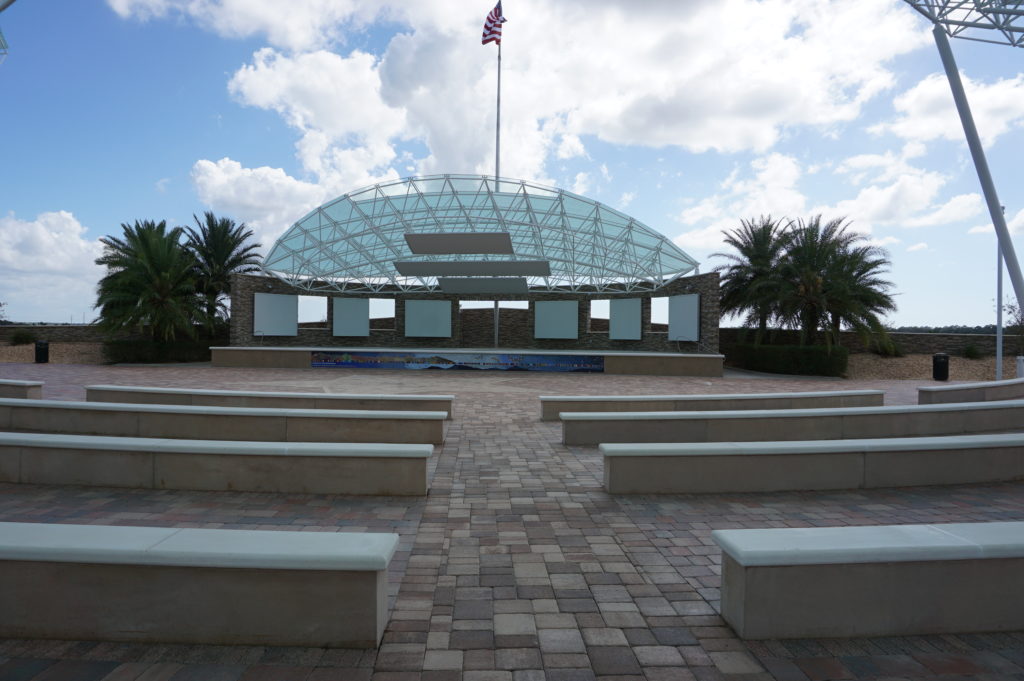
On that Saturday evening, however, it was time for fun, and Dave and Linda took us to a comedy club, McCurdy’s Comedy Theater and Humor Institute, which was great fun, and on the way back to their home, we stopped at the “Kissing Sailor” statue, developed from an iconic photo of a sailor embracing his beloved on the streets of Manhattan as the official surrender of Japan and the end of World War II were announced. Each couple shot photos of the other standing beneath this unique feature of the urban landscape in Sarasota.
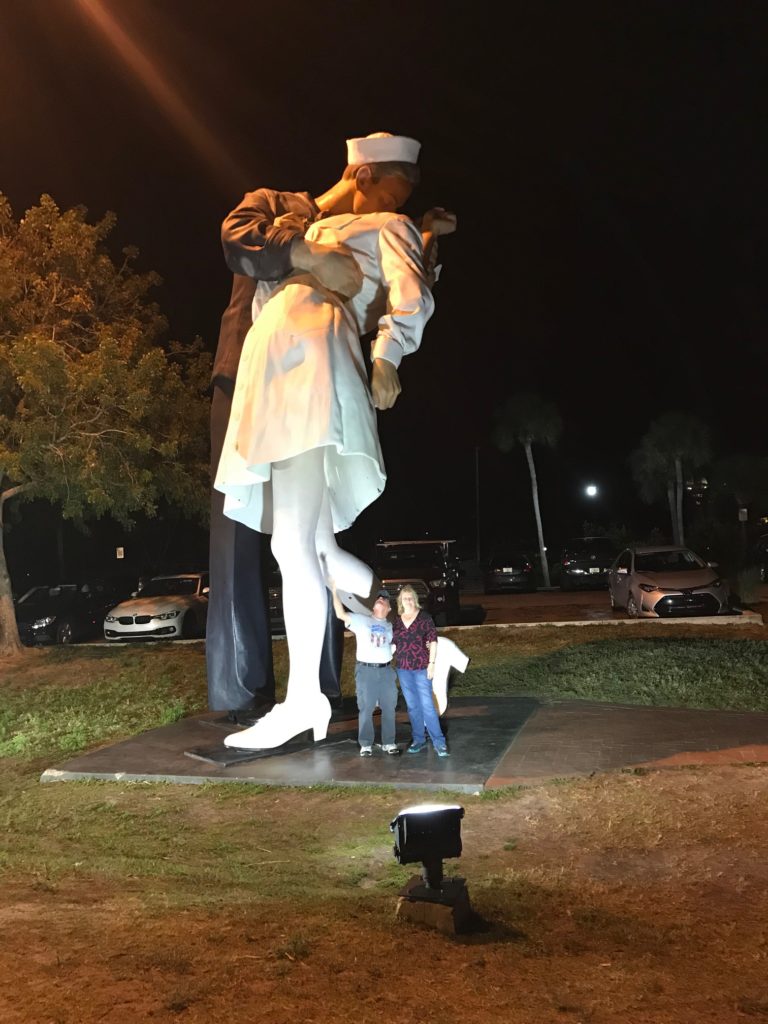
The next morning, with our free time waning before driving to the Tampa International Airport, we all made one last stop, at the Ken Thompson Park. What would Florida be without its beaches? Ken Thompson, the namesake of the park, was a long-time city manager in Sarasota. More importantly, the beach, like the rest of southern Florida, was 84° F. and sunny, with plenty of people resting on the sand and taking in the scenery of the Gulf Coast. Not far away are opportunities to follow a boardwalk through a small forest. It is small wonder in such a setting that Florida might beckon to anyone used to northern weather in the winter, but duty called, and Chicago is very nice once spring arrives.
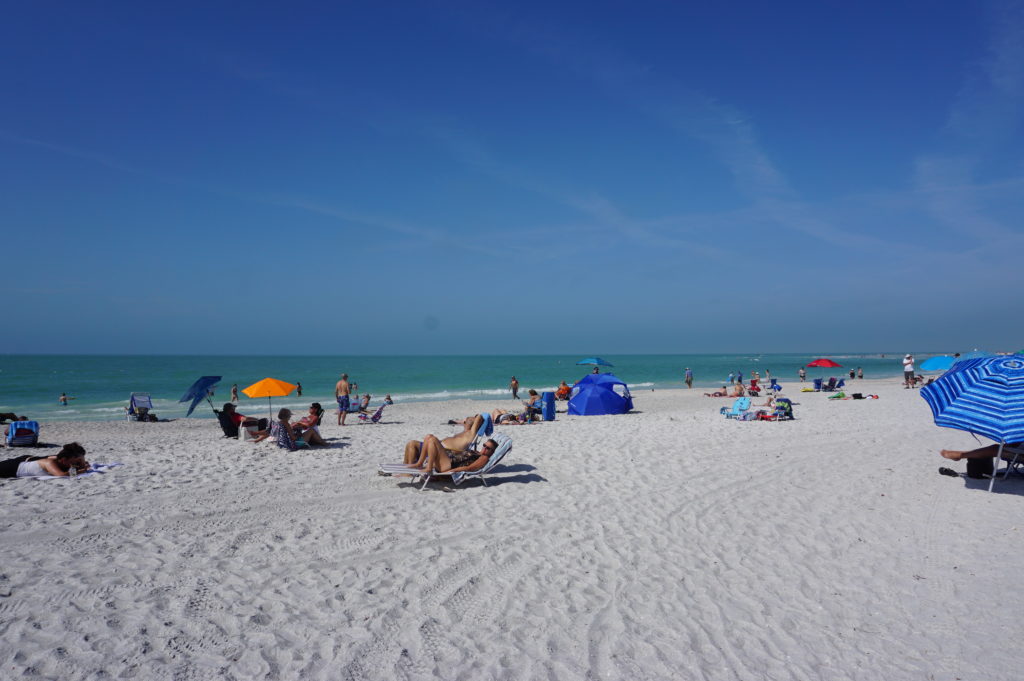
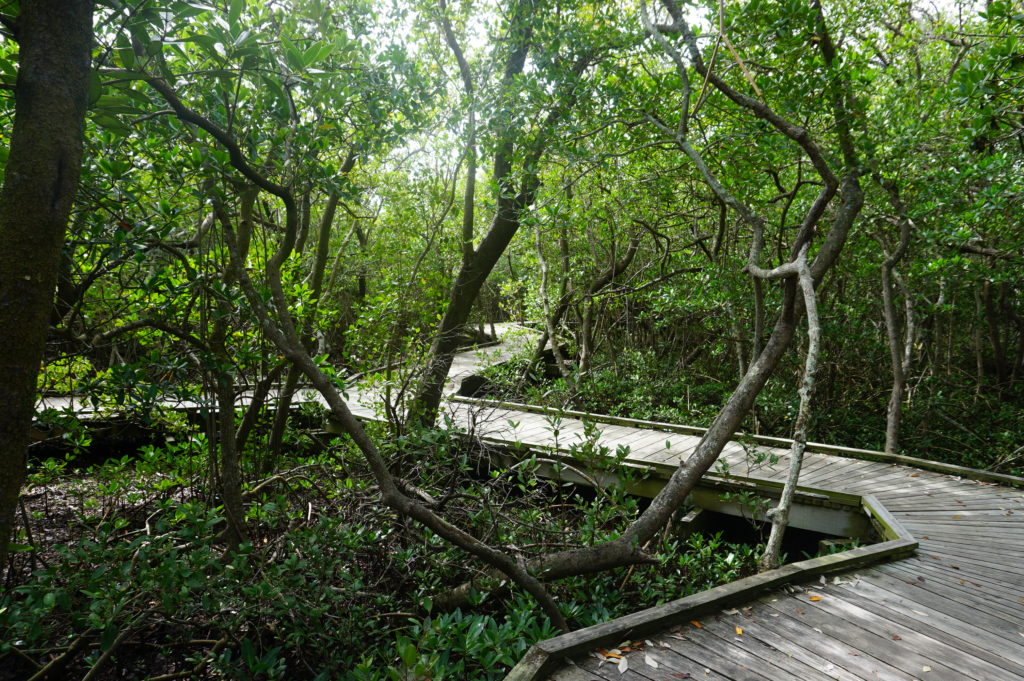
In fact, I took so long to write this story that it is here. Tomorrow I plan to take time to ride my bicycle on the 606 Trail, whose story I told in this blog when it opened nearly four years ago. Snow? It happens, but it’s over for now, just a fading memory.
Jim Schwab
Touching Sky and Sea in Norway
For three months, I have been intermittently aware that, back in August, I shared two phases of a trip to Norway that my wife and I took in July—and that I promised to complete the story with two more. At the same time, I was laying the groundwork for an entirely new phase of my career. Having left the American Planning Association (APA) at the end of May, I was planning book projects, establishing a one-person consulting firm, preparing to teach my fall course at the University of Iowa, and undertaking periodic speaking engagements. This was all part of my “five-point retirement plan,” of which the remaining piece is this blog.
Soon enough, however, given my professional focus on planning for disasters, real life overwhelmed my intentions. Even as I was laying the groundwork for Jim Schwab Consulting LLC, my consulting operation, Hurricane Harvey was blasting the Texas coast. Harvey was soon followed by Irma in Florida, then Maria in Puerto Rico, then wildfires in California. Though I have not been involved in recovery from Irma and Maria, people in Texas solicited my attention, and later I spoke at conferences in North Carolina and Utah. I am participating in a planning group for Harvey recovery, and I have undertaken some other work as well. Before I realized it, the semester was over, the holidays were upon us, and I had utterly failed to write about the rest of the Norway venture. And I do like to inject some travelogues into this blog. All disasters and policy disquisitions and no fun can make for a dull blog. (Some readers may disagree, but my mixture of subject matter seems to have broad appeal.)
So. About four months ago, I left our story in Oslo after a busy Monday. Jean and I stayed overnight, packed our bags again, and got ready to travel to Bergen. The trip between those two cities is one I would recommend to anyone with the slightest appetite for dramatic scenery. But first we had to move from our hotel, the Radisson Blu Scandinavia, to the railway station. One truly neat feature of Oslo is the tram, which was included in our Oslo Pass, as was all other public transit including the subway system. The tram stopped right behind the hotel, and the railway station was only a few stops away. We had a pleasant early morning ride down the middle of the street, then crossed the street with our luggage and entered a very modern-looking station that would put us on our train to Bergen. It all seemed very convenient and well organized.
 The train from Oslo to Bergen, however, is more than just well organized. Norway in a Nutshell notes that the Bergen Railway is “Northern Europe’s highest-altitude railway line.” The passenger cars indicate the altitude at each stop, so you can track your progress upward as well as across the country and downward again to the sea. The highest reading I recall was 1,224 meters, roughly 4,000 feet, but a glance out the window made clear the mountains around us touched the clouds at a slightly more rarefied level.
The train from Oslo to Bergen, however, is more than just well organized. Norway in a Nutshell notes that the Bergen Railway is “Northern Europe’s highest-altitude railway line.” The passenger cars indicate the altitude at each stop, so you can track your progress upward as well as across the country and downward again to the sea. The highest reading I recall was 1,224 meters, roughly 4,000 feet, but a glance out the window made clear the mountains around us touched the clouds at a slightly more rarefied level.
Once the train departs the urban environment of Oslo, the scenery changes rapidly, passing lakes and rivers and entering the interior of Norway to reveal small lowland farms in the shadows of green, often forested hills. Over a 6 ½ hour journey, the train finds its way into numerous small communities along winding valleys and into the mountains until you begin to witness snow on the peaks, even in July, where the combination of altitude and latitude make clear that Norway is never entirely green.  Knowing the long history of this nation, one can only imagine how the challenges of traversing this landscape influenced first the Viking, then the medieval, Reformation, and even Enlightenment Norwegian mindset, and why the law of primogeniture combined with meager prospects for agricultural prosperity to send waves of young people to America in search of a better life. Of course, in modern times, Norwegians have found prosperity through other means, including energy development and a highly educated work force, but for many centuries most people endured a hardscrabble life in a relatively unyielding environment. That gorgeous landscape did not make life easy for those trying to survive by breeding livestock and growing crops. Even though we did not leave the train until we reached Bergen, one could feel the chilly air when the doors opened at small town stations, and knowing it was July made one wonder how cold it might be in January.
Knowing the long history of this nation, one can only imagine how the challenges of traversing this landscape influenced first the Viking, then the medieval, Reformation, and even Enlightenment Norwegian mindset, and why the law of primogeniture combined with meager prospects for agricultural prosperity to send waves of young people to America in search of a better life. Of course, in modern times, Norwegians have found prosperity through other means, including energy development and a highly educated work force, but for many centuries most people endured a hardscrabble life in a relatively unyielding environment. That gorgeous landscape did not make life easy for those trying to survive by breeding livestock and growing crops. Even though we did not leave the train until we reached Bergen, one could feel the chilly air when the doors opened at small town stations, and knowing it was July made one wonder how cold it might be in January.
And yet there was no question that the views were strikingly beautiful–unless you were passing through one of several tunnels beneath the mountains. We were not there in the right season to attest to this, but I have read repeatedly that winds and snow in the winter make this mountainous terrain a challenging environment in which to maintain year-round train service. The Norwegians, however, are as prepared for such challenges as anyone. They keep the train moving.
 In due course, of course, one reaches the peak of the journey, and the downhill ride begins, ending near the sea in Bergen, the second-largest city in Norway behind Oslo. Because of prior arrangements by Bill Mitchell at Conlin Travel, we were greeted upon our exit from the train by a local driver who turned out to be a retired police officer, a fact he revealed in the process of insisting that we buckle up before he took us to our hotel, about 15 minutes away along the harbor. From him, we learned that Bergen is a city of nearly 300,000 people, with half as many more living in the entire metropolitan area. As first-time visitors, we were about to learn just how much Bergen has to offer.
In due course, of course, one reaches the peak of the journey, and the downhill ride begins, ending near the sea in Bergen, the second-largest city in Norway behind Oslo. Because of prior arrangements by Bill Mitchell at Conlin Travel, we were greeted upon our exit from the train by a local driver who turned out to be a retired police officer, a fact he revealed in the process of insisting that we buckle up before he took us to our hotel, about 15 minutes away along the harbor. From him, we learned that Bergen is a city of nearly 300,000 people, with half as many more living in the entire metropolitan area. As first-time visitors, we were about to learn just how much Bergen has to offer.
 Our modest but well-appointed Clarion Hotel Admiral offered a marvelously serene waterfront setting, supported by a flotilla of sail boats, fishing boats, and larger commercial craft. Somewhere further along the coast were the large cruise ships, such as the Nordnorge, on which we would be sailing by the next evening. Bergen is largely defined by its status as a seaport on a fjord near the Atlantic Ocean, but that location makes it as scenic as any city would want to be. From a crowded waterfront, homes and other buildings seem to radiate up the slopes until they thin out and the insistent lush forest takes over. We were also lucky. We were told it had been raining for most of the month before our arrival, but that, with the emergent sunshine after some initial misty cloudiness, we had “won the weather lottery.” We were grateful for the photogenic result.
Our modest but well-appointed Clarion Hotel Admiral offered a marvelously serene waterfront setting, supported by a flotilla of sail boats, fishing boats, and larger commercial craft. Somewhere further along the coast were the large cruise ships, such as the Nordnorge, on which we would be sailing by the next evening. Bergen is largely defined by its status as a seaport on a fjord near the Atlantic Ocean, but that location makes it as scenic as any city would want to be. From a crowded waterfront, homes and other buildings seem to radiate up the slopes until they thin out and the insistent lush forest takes over. We were also lucky. We were told it had been raining for most of the month before our arrival, but that, with the emergent sunshine after some initial misty cloudiness, we had “won the weather lottery.” We were grateful for the photogenic result.
 For Jean and me, after checking in and relaxing in our room, our first order of business was to meet up with personal friends who would join us on the cruise. Two of my colleagues at APA had also retired within the last few months. Carolyn Torma, formerly
For Jean and me, after checking in and relaxing in our room, our first order of business was to meet up with personal friends who would join us on the cruise. Two of my colleagues at APA had also retired within the last few months. Carolyn Torma, formerly  education director, left at the end of November 2016 and had already been traveling on her own since then. Deene Alongi, the meetings and conferences director, retired on July 12, just a few days before our trip. She and I had met over dinner about some business matters back in January, and in discussing our plans, discovered we both intended to cruise the fjords of Norway during the summer. She and Carolyn had already been making arrangements for a cruise with Hurtigruten, a Norwegian cruise company, through Mitchell, an acquaintance of Carolyn’s cousin, Carol Wargelin. Why not join forces, we decided, and book the same cruise? Using the same travel agent allowed us to connect at the same hotel, even though our three friends were arriving separately after flying straight to Bergen, letting us visit Oslo first on our own, something I wanted to do so that Jean and I could ride the train to Bergen.
education director, left at the end of November 2016 and had already been traveling on her own since then. Deene Alongi, the meetings and conferences director, retired on July 12, just a few days before our trip. She and I had met over dinner about some business matters back in January, and in discussing our plans, discovered we both intended to cruise the fjords of Norway during the summer. She and Carolyn had already been making arrangements for a cruise with Hurtigruten, a Norwegian cruise company, through Mitchell, an acquaintance of Carolyn’s cousin, Carol Wargelin. Why not join forces, we decided, and book the same cruise? Using the same travel agent allowed us to connect at the same hotel, even though our three friends were arriving separately after flying straight to Bergen, letting us visit Oslo first on our own, something I wanted to do so that Jean and I could ride the train to Bergen.
By late afternoon, I met Deene in the lobby as she entered the hotel. Later we met Carolyn and Carol, and the five of us enjoyed dinner in Admiral’s very pleasant restaurant. Our conversation revolved around plans for the following day, for we would have until 4 p.m. to wander the city before boarding a bus to the dock to enter the cruise ship.
Although our plans evolved, Bergen made it easy to enjoy the day. We discovered the Kode museums,  which line one edge of a charmingly picturesque public park anchored by a pond with a fountain but also including a gazebo and lush lawns. Using a single pass, we visited all four museums by late afternoon, punctuated by lunch at a reasonably classy diner adjoining one of them. The museums offer five daily tours in English, in addition to Norwegian. Kode 1 offers the Singer collection, a combination of Chinese porcelain, period furniture from the 16th and 17th centuries, and classic paintings, among other art, plus a splendid display of silver and gold artifacts created in the city over the past half-millennium, and the H.M. Queen Sonja “Underway,” displaying graphic and ceramic artworks sponsored by a royal who seemed to relish the chance to sponsor sculpture and craft works.
which line one edge of a charmingly picturesque public park anchored by a pond with a fountain but also including a gazebo and lush lawns. Using a single pass, we visited all four museums by late afternoon, punctuated by lunch at a reasonably classy diner adjoining one of them. The museums offer five daily tours in English, in addition to Norwegian. Kode 1 offers the Singer collection, a combination of Chinese porcelain, period furniture from the 16th and 17th centuries, and classic paintings, among other art, plus a splendid display of silver and gold artifacts created in the city over the past half-millennium, and the H.M. Queen Sonja “Underway,” displaying graphic and ceramic artworks sponsored by a royal who seemed to relish the chance to sponsor sculpture and craft works.
Kode 2 was not then open, preparing a new exhibition that opened in October. Kode 3 featured the Rasmus Meyer collection, an assortment of Norwegian paintings from 1880-1905, which is surely the golden age, with works from landscape and other
painters like J.C. Dahl, Harriet Backer, and Theodor Kittelsen. I will not claim to be any sort of expert on the subject; in fact, I learned about some of the artists for the first time in this visit. But viewing these works up close filled me with admiration for their skills and the cultural perspectives they conveyed. There can be little doubt that Norway experienced a remarkable flowering of artistic talent in the late 19th century. And that is before we even mention the substantial display of work by Edvard Munch. The iconic The Scream, for which he is best known (and of which there are four versions), is only the beginning of Munch’s lifetime of productivity, punctuated by some tragic interludes that no doubt profoundly influenced some of his artistic idiosyncrasies. However, it would be a mistake to think that all, or even most, of his work is affected by the mental illness that ran through the family, including his father, or was dark and depressed. Indeed, there is an entire strain of cheerful nature painting within his oeuvre. Munch was clearly Norway’s artistic genius.
Finally, Kode 4 branches out beyond Norway to include numerous modern European and other artists, including Pablo Picasso, Paul Klee, Diego Rivera, and Joan Miró. But as one might expect, time ran out, and we all had to stroll back to the Admiral Hotel, retrieve our stored luggage, and await transport to the Hurtigruten dock to embark on our cruise, which will be the focus of the final installment in this series.
Jim Schwab

